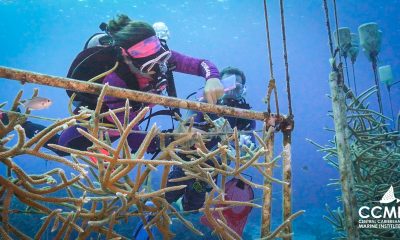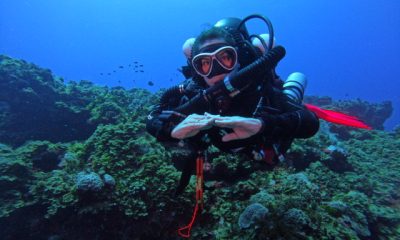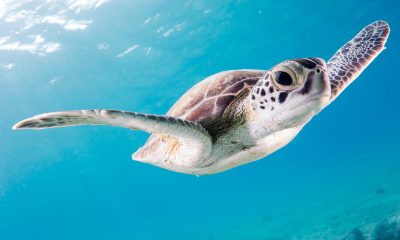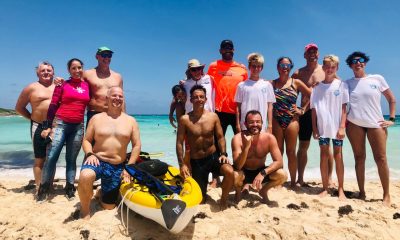News
The Future is 2020: The Cayman Islands announces new inductees for 20th Annual International Scuba Diving Hall of Fame
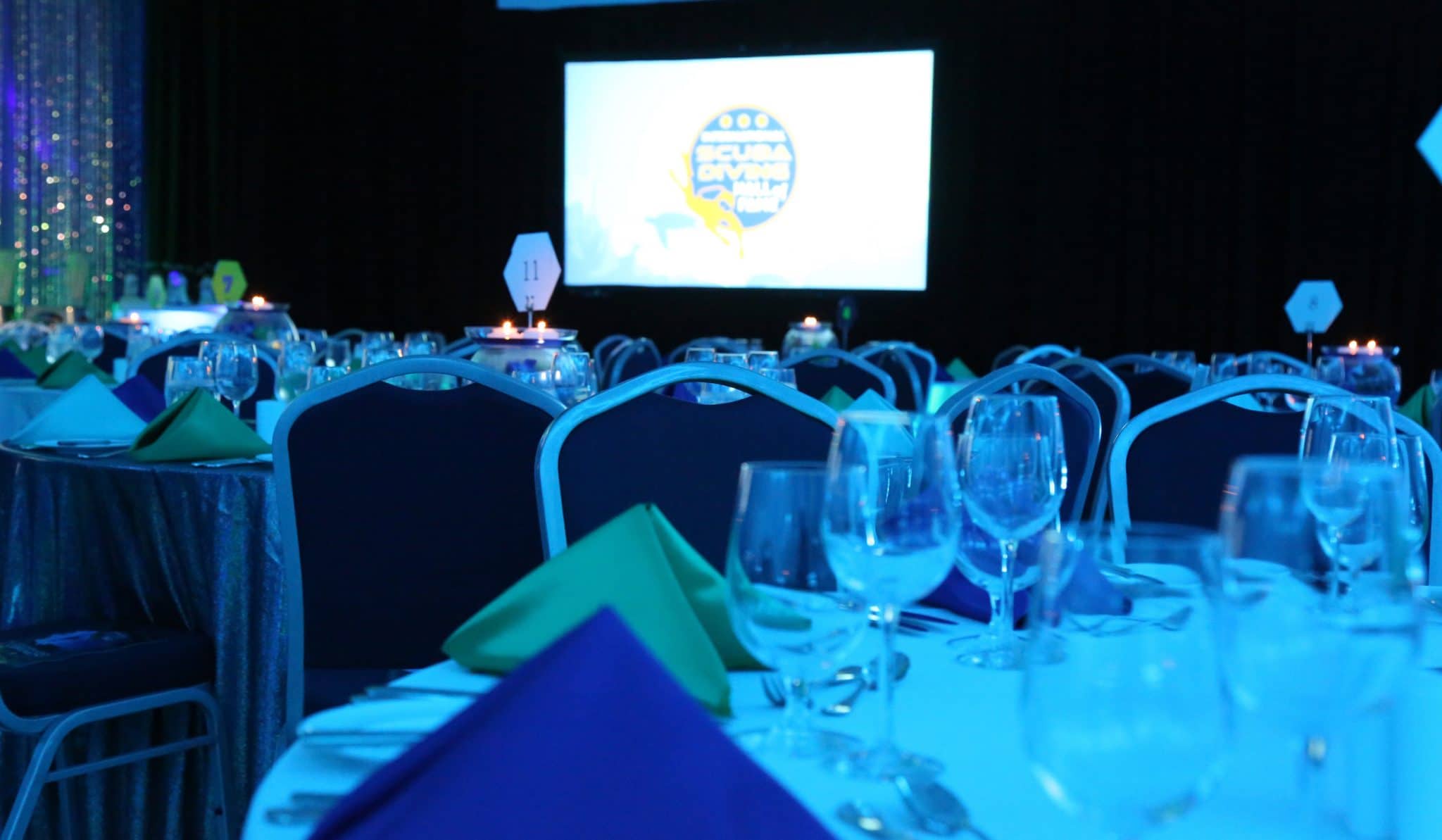
The International Scuba Diving Hall of Fame (ISDHF) and the Cayman Islands Department of Tourism (CIDOT) have announced the four new members who will be inducted into the prestigious 2020 Hall of Fame. To commemorate the IDSHF’s 20th anniversary, Hon. Minister of Tourism, Mr. Moses Kirkconnell, has announced the Hall of Fame will see its permanent home at the historic Pedro St. James starting in 2020.
Hand-picked by the ISDHF board of directors, the latest inductees include Tom Ingram (United States of America), Jill Heinerth (Canada), Jim Gatacre (Canada) and Avi Klapfer (Israel for Cocos Island), who will officially join fellow esteemed dive industry pioneers taking the plunge to help cultivate and revolutionize the sport of scuba diving in the Cayman Islands and throughout the world. On September 25, 2020, the newest ISDHF members will be inducted into the 2020 Hall of Fame during an official ceremony and dinner held on Grand Cayman in the Cayman Islands.
“In honour of the 20th anniversary of The International Scuba Diving Hall of Fame, it makes perfect sense to announce its permanent home at the historic Pedro St. James in Grand Cayman. The ISDHF strives to celebrate key dive industry leaders and Pedro St. James provides an opportunity to honour these individuals while spreading awareness of the sport to diversifying target markets,” said Hon. Minister of Tourism, Mr. Moses Kirkconnell. “For twenty years and beyond, the Cayman Islands continues to highlight the ever-growing achievements of the world’s greatest leaders in the international dive industry through the International Scuba Diving Hall of Fame.”
Established by the Cayman Islands Ministry of Tourism in 2000, the ISDHF celebrates dive industry leaders who have contributed to the success of recreational scuba diving worldwide through innovation and advancements made in the areas of dive tourism, equipment design, dive safety, inclusivity, exploration, adventure, innovation and more.
The following individuals have been selected for induction in 2020:
Tom Ingram (United States of America)
 With more than 40 years of experience in the recreational diving industry, Tom Ingram has served as the President of the Diving Equipment & Marketing Association (DEMA) since 2002. His leadership of DEMA has elevated his profile globally and has become the “face” of the USA’s diving industry, developing strategic alliances with international diving groups around the world. As the longest-servicing president in the history of DEMA with more than 17 years of service, Ingram’s managerial skills have brought a much-needed stability to the association. Additionally, he was recognized by the members of the Academy of Underwater Arts & Sciences with the 2017 NOGI Award for Distinguished Service.
With more than 40 years of experience in the recreational diving industry, Tom Ingram has served as the President of the Diving Equipment & Marketing Association (DEMA) since 2002. His leadership of DEMA has elevated his profile globally and has become the “face” of the USA’s diving industry, developing strategic alliances with international diving groups around the world. As the longest-servicing president in the history of DEMA with more than 17 years of service, Ingram’s managerial skills have brought a much-needed stability to the association. Additionally, he was recognized by the members of the Academy of Underwater Arts & Sciences with the 2017 NOGI Award for Distinguished Service.
Once the Department Head of the Sport Diving Operations Program at the Florida Institute of Technology (FIT), Ingram established the first four-year degree program in Recreational Diving Management (RDM) at Barry University in Miami Shores, Fla., solidifying the recreational diving professional career. At FIT, Ingram worked as Manager of the East Coast Shipwreck Project, coordinating the efforts of Mel Fisher’s treasure salvors, the State of Florida, and Marine Archaeologists to recover and catalog treasure from the 1715 Spanish Plate Fleet as well as recovering the Nuestra Senora de Atocha off Key West, Fla.. Ingram also served on the Board of the International Scuba Diving Hall of Fame from 2005-2019. His contributions to the diving community has marked him as one of the most influential executives in the global diving industry.
Jill Heinerth (Canada)
 As a pioneering underwater explorer and filmmaker, Jill Heinerth’s passion lies beneath the surface. Heinerth’s photography and writing have been featured in prominent publications around the world, and she has received the KEEN Footwear-STAND Award for environmental photography. Her work in environmental filmmaking has been recognized with countless awards including: International “Deffie” for the Best HD Documentary, Best Educational Film – Explorer’s Club Film Festival, Cine Golden Eagle’s and others. In recognition of her lifetime achievement, Heinerth was awarded the inaugural Medal for Exploration, recognizing singular achievements and the pursuit of excellence by an outstanding Canadian explorer.
As a pioneering underwater explorer and filmmaker, Jill Heinerth’s passion lies beneath the surface. Heinerth’s photography and writing have been featured in prominent publications around the world, and she has received the KEEN Footwear-STAND Award for environmental photography. Her work in environmental filmmaking has been recognized with countless awards including: International “Deffie” for the Best HD Documentary, Best Educational Film – Explorer’s Club Film Festival, Cine Golden Eagle’s and others. In recognition of her lifetime achievement, Heinerth was awarded the inaugural Medal for Exploration, recognizing singular achievements and the pursuit of excellence by an outstanding Canadian explorer.
Jill Heinerth has dived deeper into caves than any woman in history, holding the women’s world record of deep cave penetration in 1998. She became the first person to dive the ice caves of Antarctica, penetrating further into an underwater cave system than any woman ever. In 2001, she was part of a team that “discovered wondrous life and magical vistas” and experienced the calving of an iceberg, documented in the film Ice Island. Recognizing a lifetime devoted to water advocacy, Heinerth has since become a motivational speaker, prolific author of numerous books on technical diving, and a pioneer in the field of technical rebreather diving.
Jim Gatacre (Canada)
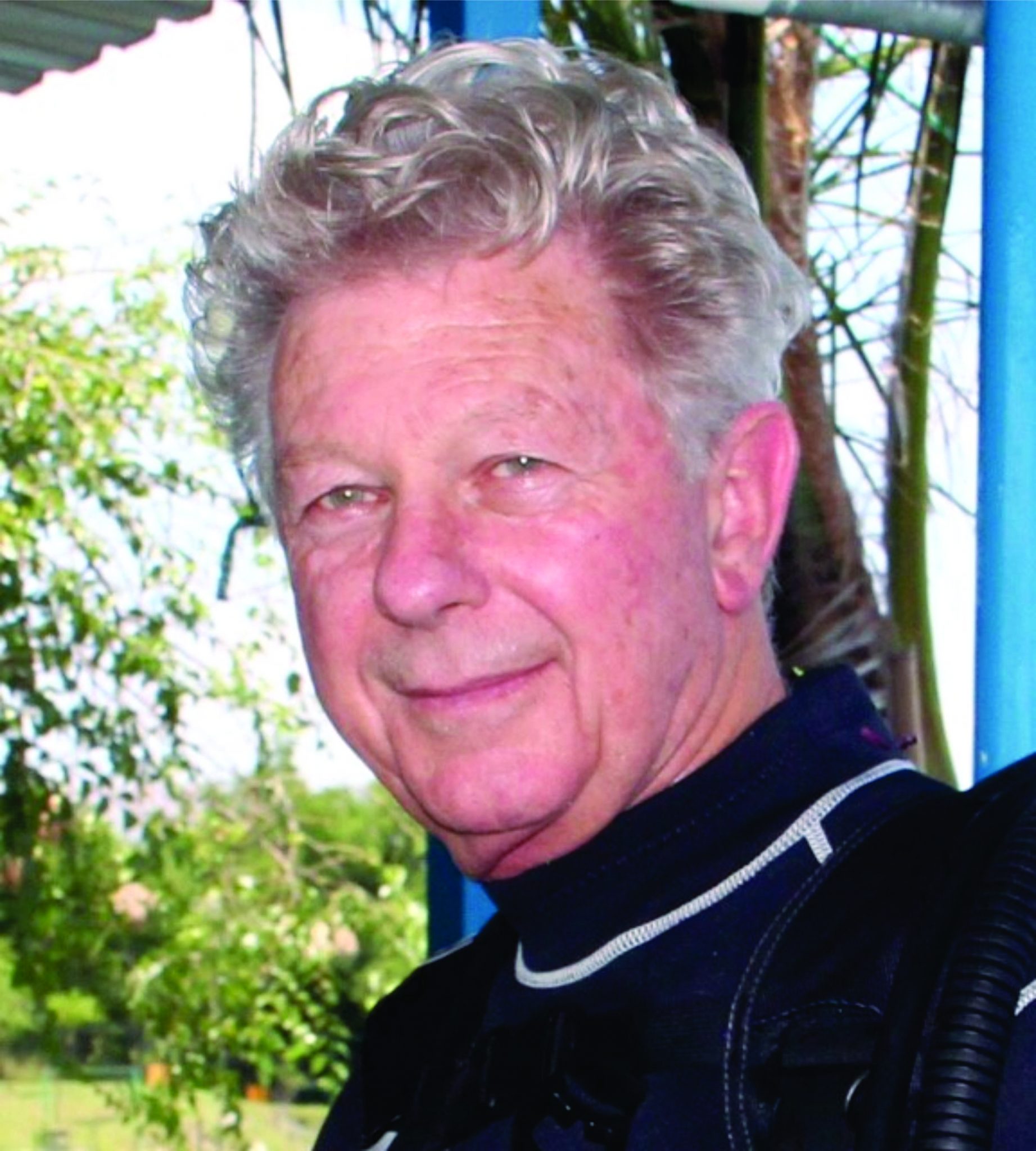 Jim Gatacre is the founder of the Handicapped Scuba Association (HSA), a 501(c) 3 non-profit corporation that has allowed handicapped people around the globe to enjoy the wonders of the underwater world. As the leading authority on recreational diving for handicapped people, the HSA has trained and certified over ten thousand recipients, expanding Gatacre’s vision of an international organization that promotes enhanced self-image and social interaction through the unifying sport of scuba diving.
Jim Gatacre is the founder of the Handicapped Scuba Association (HSA), a 501(c) 3 non-profit corporation that has allowed handicapped people around the globe to enjoy the wonders of the underwater world. As the leading authority on recreational diving for handicapped people, the HSA has trained and certified over ten thousand recipients, expanding Gatacre’s vision of an international organization that promotes enhanced self-image and social interaction through the unifying sport of scuba diving.
Gatacre’s diving journey began after an accident in 1972 that left his right arm partially paralyzed. In 1973, while attending the University of California Irvine (UCI), with the use of only his left arm, he earned his NAUI Open Water Scuba Diver certification. Gatacre’s vision, commitment and dedication made the impossible a possibility for handicapped people by broadening the inclusivity of the sport of scuba diving.
Avi Klapfer (Israel for Cocos Island)
 Avi Klapfer is an Israeli underwater photographer based in Costa Rica who has explored and protected the remote Cocos Island since 1990. Klapfer co-authored Costa Rica Blue, a comprehensive dive guide for Costa Rica with an emphasis on Cocos Island, the first book of its kind for the country and an important step in drawing attention to protecting the waters in a country under constant fishing pressure. As part of the Cocos Island’s preservation efforts, Klapher’s company, Undersea Hunter Group, has since declared the island as a UNESCO World Heritage Site, providing visual evidence of illegal fishing practices within its boundaries, using his “Deep See” submarine.
Avi Klapfer is an Israeli underwater photographer based in Costa Rica who has explored and protected the remote Cocos Island since 1990. Klapfer co-authored Costa Rica Blue, a comprehensive dive guide for Costa Rica with an emphasis on Cocos Island, the first book of its kind for the country and an important step in drawing attention to protecting the waters in a country under constant fishing pressure. As part of the Cocos Island’s preservation efforts, Klapher’s company, Undersea Hunter Group, has since declared the island as a UNESCO World Heritage Site, providing visual evidence of illegal fishing practices within its boundaries, using his “Deep See” submarine.
To Klapfer, one of the most important elements in keeping Cocos Island protected has always been spreading word of its novelty through video and media images. His dedication to submarine exploration and service to researchers has aided making Cocos Island one of the best protected dive sites in the world.
To learn more about the 2020 ISDHF inductees, please visit the following link: https://www.visitcaymanislands.com/en-us/isdhf/induction-week/new-inductees.
To learn more about the Cayman Islands, please go to www.visitcaymanislands.com or www.divecayman.ky or call your local travel agent.
Watch Scubaverse’s video of the 2019 ISDHF ceremony HERE.
Read all about the 2019 inductees and the ISDHF ceremony in the WINTER 2020 edition of Dive Travel Adventures magazine, available in January 2020!
Blogs
Northern Red Sea Reefs and Wrecks Trip Report, Part 3: The Mighty Thistlegorm

Jake Davies boards Ghazala Explorer for an unforgettable Red Sea diving experience…
Overnight, the wind picked up, making the planned morning dive a bit bumpy on the Zodiacs to the drop point on Thomas Reef. There, we would dive along the reef before descending through the canyon and then passing under the arch before ascending the wall with a gentle drift. The site provided great encounters with more pelagic species, including shoals of large barracuda, tuna, and bigeye trevally.
Once back on the boat, it was time to get everything tied down again as we would head back south. This time, with the wind behind us, heading to Ras Mohammed to dive Jackfish Alley for another great gentle drift wall dive before then heading up the coast towards the Gulf of Suez to moor up at the wreck of the Thistlegorm. This being the highlight wreck dive of the trip and for many onboard, including myself, it was the first time diving this iconic wreck. I had heard so much about the wreck from friends, and globally, this is a must on any diver’s list. Fortunately for us, there was only one other boat at the site, which was a rarity. A great briefing was delivered by Ahmed, who provided a detailed background about the wreck’s history along with all the required safety information as the currents and visibility at the site can be variable.

Kitting up, there was a lot of excitement on deck before entering the water and heading down the shoreline. Descending to the wreck, there was a light northerly current which reduced the visibility, making it feel more like the conditions that can be found off the Welsh coast. At 10m from the bottom, the outline of the wreck appeared as we reached the area of the wreck which had been bombed, as our mooring line was attached to part of the propeller shaft. Arriving on deck, instantly everywhere you looked there were many of the supplies which the ship was carrying, including Bren Carrier tanks and projectiles that instantly stood out.

We headed around the exterior, taking a look at the large propeller and guns mounted on deck before entering the wreck on the port side to take a look in the holds. It was incredible to see all the trucks, Norton 16H, and BSA motorcycles still perfectly stacked within, providing a real snapshot in time.

Overall, we had four dives on the Thistlegorm, where for all of the dives we were the only group in the water, and at times, there were just three of us on the whole wreck, which made it even more special, especially knowing that most days the wreck has hundreds of divers. Along with the history of the wreck, there was plenty of marine life on the wreck and around, from big green turtles to batfish, along with shoals of mackerel being hunted by trevally. Some unforgettable dives.

The final leg of the trip saw us cross back over the Suez Canal to the Gobal Islands where we planned to stay the night and do three dives at the Dolphin House for the potential of sharing the dive with dolphins. The site, which included a channel that was teeming with reef fish, especially large numbers of goatfish that swam in large shoals along the edge of the reef. These were nice relaxing dives to end the week. Unfortunately, the dolphins didn’t show up, which was okay as like all marine life they are difficult to predict and you can’t guarantee what’s going to be seen. With the last dive complete, we headed back to port for the final night where it was time to clean all the kit and pack before the departure flight the next day.

The whole week from start to finish on Ghazala Explorer was amazing; the boat had all the facilities you need for a comfortable week aboard. The crew were always there to help throughout the day and the chefs providing top quality food which was required after every dive. The itinerary providing some of the best diving with a nice mixture of wreck and reef dives. I would recommend the trip to anyone, whether it’s your first Red Sea liveaboard in the Red Sea or you’re revisiting. Hopefully, it’s not too long before I head back to explore more of the Red Sea onboard Ghazala Explorer.

To find out more about the Northern Red Sea reef and wrecks itineraries aboard Ghazala Explorer, or to book, contact Scuba Travel now:
Email: dive@scubatravel.com
Tel: +44 (0)1483 411590
Photos: Jake Davies / Avalon.Red
Blogs
Northern Red Sea Reefs and Wrecks Trip Report, Part 2: Wall to Wall Wrecks

Jake Davies boards Ghazala Explorer for an unforgettable Red Sea diving experience…
The second day’s diving was a day full of wreck diving at Abu Nuhas, which included the Chrisoula K, Carnatic, and Ghiannis D. The first dive of the day was onto the Chrisoula K, also known as the wreck of tiles. The 98m vessel remains largely intact where she was loaded with tiles which can be seen throughout the hold. The stern sits at 26m and the bow just below the surface. One of the highlights of the wreck is heading inside and seeing the workroom where the machinery used for cutting the tiles are perfectly intact. The bow provided some relaxing scenery as the bright sunlight highlighted the colours of the soft coral reef and the many reef fish.

Following breakfast, we then headed to the next wreck, which was the Carnatic. The Carnatic is an 89.9m sail steamer vessel that was built in Britain back in 1862. She ran aground on the reef back in 1869 and remains at 27m. At the time, she was carrying a range of items, including 40,000 sterling in gold. An impressive wreck where much of the superstructure remains, and the two large masts lay on the seafloor. The wooden ribs of the hull provide structures for lots of soft corals, and into the stern section, the light beams through, bouncing off the large shoals of glass fish that can be found using the structure as shelter from the larger predators that are found outside of the wreck.

The final wreck at Abu Nuhas was the Ghiannis D, originally called ‘Shoyo Maru,’ which was 99.5m long and built in Japan back in 1969 before becoming a Greek-registered cargo ship in 1980. The ship then ran aground on the reef on April 19th, 1983, and now sits at the bottom at a depth of 27m. Heading down the line, the stern of the ship remains in good condition compared to the rest of the hull. The highlight of the wreck, though, is heading into the stern section and down the flights of stairs to enter the engine room, which remains in good condition and is definitely worth exploring. After exploring the interior section of the ship, we then headed over to see the rest of the superstructure, where it’s particularly interesting to see the large table corals that have grown at the bow relatively quickly considering the date the ship sank. After surfacing and enjoying some afternoon snacks, we made sure everything was strapped down and secured as we would be heading north and crossing the Gulf of Suez, where the winds were still creating plenty of chop.

The next morning, it was a short hop to Ras Mohammed Nature Reserve for the next couple of days of diving. The 6am wake-up call came along with the briefing for the first site we would be diving, which was Shark & Yolanda. The low current conditions allowed us to start the dive at Anemone City, where we would drift along the steep, coral-filled wall. These dives involved drifts, as mooring in Ras Mohammed wasn’t allowed to protect the reefs. As a dive site, Shark & Yolanda is well-known and historically had a lot of sharks, but unfortunately not so many in recent years, especially not so early in the season. However, there was always a chance when looking out into the blue.

The gentle drift took us along the steep walls of the site, with plenty of anemone fish to be seen and a huge variety of corals. It wasn’t long into the dive before we were accompanied by a hawksbill turtle, who drifted with us between the two atolls before parting ways. Between the two reefs, the shallow patch with parts of coral heads surrounded by sand provided the chance to see a few blue-spotted stingrays that were mainly resting underneath the corals and are always a pleasure to see. With this being the morning dive, the early sunlight lit up the walls, providing tranquil moments. Looking out into the blue, there was very little to be seen, but a small shoal of batfish shimmering underneath the sunlight was a moment to capture as we watched them swim by as they watched us.

Towards the end of the dive, we stopped at the wreck of the Jolanda where the seafloor was scattered with toilets from the containers it was carrying. This provided a unique site to make a safety stop, which was also accompanied by a large barracuda slowly swimming by, along with a hawksbill turtle calmly swimming over the reef as the sun rays danced in the distance.
For the next dive, we headed north to the Strait of Tiran to explore the reefs situated between Tiran Island and Sharm El Sheik, which were named after the British divers who had found them. We started on Jackson before heading to Gordons Reef, where we also did the night dive. All the atolls at these sites provided stunning, bustling coral reefs close to the surface and steep walls to swim along, which always provided the opportunity to keep an eye out for some of the larger species that can be seen in the blue. Midwater around Jackson Reef was filled with red-toothed triggerfish and shoals of banner fish, which at times were so dense that you couldn’t see into the blue. Moments went by peacefully as we enjoyed the slow drift above the reef, watching these shoals swim around under the mid-afternoon sun.

The night dive at Gordon’s Reef was mainly among the stacks of corals surrounded by sand, which was great to explore under the darkness. After some time circling the corals, we came across what we were really hoping to find, and that was an octopus hunting on the reef. We spent the majority of the dive just watching it crawl among the reef, blending into its changing surroundings through changes in colour and skin texture. It’s always so fascinating and captivating to watch these incredibly intelligent animals, in awe of their ability to carry out these physical changes to perfectly blend into the reef. Before we knew it, it was time to head back to the boat to enjoy a well-deserved tasty dinner prepared by the talented chefs onboard.
Check in for the 3rd and final part of this series from Jake tomorrow!
To find out more about the Northern Red Sea reef and wrecks itineraries aboard Ghazala Explorer, or to book, contact Scuba Travel now:
Email: dive@scubatravel.com
Tel: +44 (0)1483 411590
Photos: Jake Davies / Avalon.Red
-

 News3 months ago
News3 months agoHone your underwater photography skills with Alphamarine Photography at Red Sea Diving Safari in March
-

 News3 months ago
News3 months agoCapturing Critters in Lembeh Underwater Photography Workshop 2024: Event Roundup
-

 Marine Life & Conservation Blogs2 months ago
Marine Life & Conservation Blogs2 months agoCreature Feature: Swell Sharks
-

 Blogs2 months ago
Blogs2 months agoMurex Resorts: Passport to Paradise!
-

 Blogs2 months ago
Blogs2 months agoDiver Discovering Whale Skeletons Beneath Ice Judged World’s Best Underwater Photograph
-

 Gear Reviews3 months ago
Gear Reviews3 months agoGear Review: Oceanic+ Dive Housing for iPhone
-

 Marine Life & Conservation2 months ago
Marine Life & Conservation2 months agoSave the Manatee Club launches brand new webcams at Silver Springs State Park, Florida
-

 News3 months ago
News3 months agoWorld’s Best Underwater Photographers Unveil Breathtaking Images at World Shootout 2023



